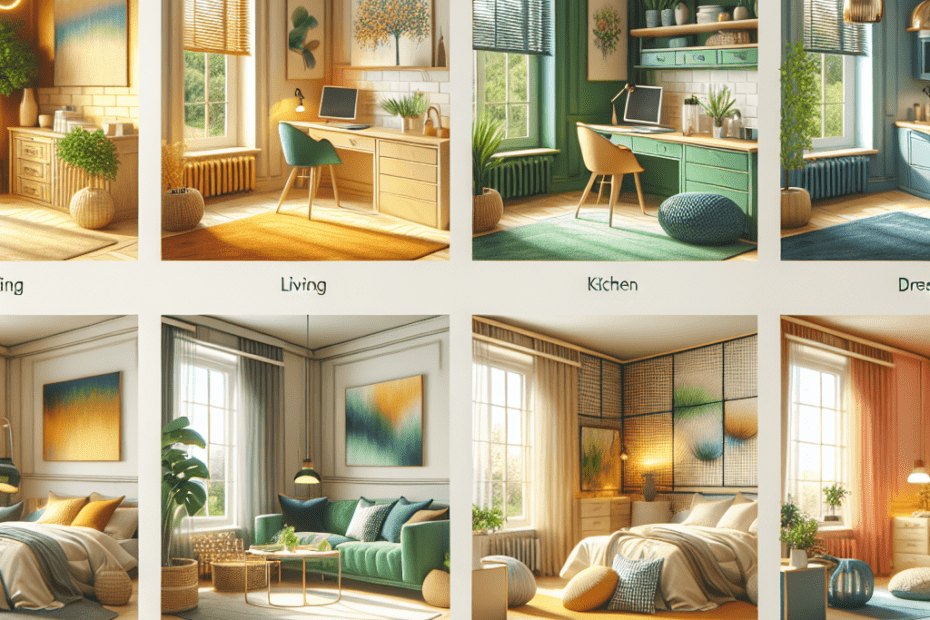The Role of Color Psychology in Home Styling
Many people may not realize it, but colors have a powerful impact on their emotions and behaviors. The concept of color psychology explores how different hues can influence an individual’s mood and actions. When it comes to home styling, understanding color psychology in design becomes crucial for creating spaces that are both aesthetically pleasing and emotionally comforting.
Understanding Color Psychology
Color psychology is the study of how colors affect perceptions and behaviors. Different colors can evoke different feelings and reactions. For instance, blue is considered calming and serene, while red is often associated with energy and excitement. They should approach home styling with these emotional triggers in mind, leading to environments that align with one’s personal needs and preferences.
The Impact of Color in Home Design
| Color | Psychological Effect |
|---|---|
| Blue | Calmness, tranquility, and productivity |
| Red | Excitement, energy, and passion |
| Green | Nature, growth, and tranquility |
| Yellow | Happiness, warmth, and attention |
| Purple | Luxury, creativity, and mystery |
Studies show that about 90% of snap judgments can be based on color alone, depending on the product or environment (source: CCICOLOR – Institute for Color Research). In home styling, choosing the right color scheme helps set the tone for a room, enhancing both its form and function.
How Different Rooms Benefit from Color Psychology
When styling a home, they should consider how different rooms might benefit from specific color palettes:
- Living Room: Opting for soft and neutral colors can make a living room feel welcoming. Using shades like beige and soft greens can encourage conversation and relaxation.
- Kitchen: Bright colors like yellow and orange can stimulate appetite and energy. White also works well for creating a clean and fresh look.
- Bedroom: Cool colors such as blues and lavenders are known for promoting calmness and restful sleep, making them ideal for bedrooms.
- Bathroom: Soft blues and greens offer a sense of cleanliness and tranquility, perfect for a refreshing bathroom atmosphere.
- Home Office: Choosing blues can help with focus and productivity, making them suitable for a productive home office setting.
Trends in Color Psychology for Home Design
As they adapt to new lifestyle norms, color trends in home styling evolve as well. For example, the rise of biophilic design—incorporating natural elements into the home—has heightened the popularity of colors like lush greens and earthy tones. These colors not only connect residents with nature but also promote well-being and sustainability.
Another emerging trend is the use of bold accent colors to create focal points. Such colors are not overwhelming but add character and vibrancy to a space. Embracing unusual combinations, like teal and rust, reflects individuality while still adhering to principles of color psychology.
The Challenges of Integrating Color Psychology in Design
Integrating color psychology in home design, they might face challenges such as existing furniture or the architectural structure that limits color choices. Moreover, personal tastes and preferences can sometimes conflict with the emotional responses typically associated with certain colors. It is essential to balance aesthetics with emotional impact.
Conclusion
Incorporating color psychology in design undeniably plays a significant role in home styling. By carefully choosing color schemes, residents can create spaces that are not only visually appealing but also cater to their emotional needs. Understanding how different colors impact mood and behavior allows for truly personalized environments that enhance quality of life.
Key Takeaways
- Color psychology explores how colors affect emotion and behavior.
- Different colors can create diverse atmospheres in different rooms.
- Current trends include biophilic design and bold accents.
- Challenges may arise from structural constraints and personal preferences.
- Properly chosen colors can improve quality of life and productivity.
FAQ
- What is color psychology in home design?
Color psychology in home design is the study of how different colors affect mood and behavior, influencing the overall atmosphere of a space.
- How does blue affect productivity?
Blue is known to enhance focus and calmness, making it a great choice for increasing productivity, especially in study or work areas.
- Why are natural colors trending in home styling?
Natural colors are part of the biophilic design trend, which aims to connect people with nature, promoting well-being and sustainability.
- Can personal preferences override color psychology?
Yes, personal preferences can sometimes take precedence, but understanding color psychology helps in making informed choices that align with emotional needs.
- Is it expensive to redecorate using color psychology?
Not necessarily. Simple changes like repainting or adding accent pieces can effectively integrate color psychology without major expenses.
